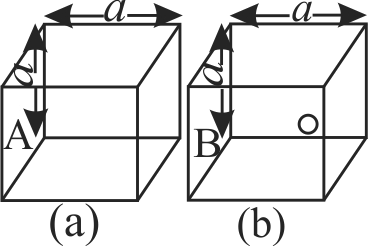366691 A uniform pressure \(P\) is exerted by an external agent on all sides of a solid cube at temperature \(t^\circ C\). By what amount should the temperature of the cube be raised in order to bring its volume back to its original volume before the pressure was applied if the bulk modulus is \(B\) and co-efficient of volumetric expansion is \(\gamma\) ?
366691 A uniform pressure \(P\) is exerted by an external agent on all sides of a solid cube at temperature \(t^\circ C\). By what amount should the temperature of the cube be raised in order to bring its volume back to its original volume before the pressure was applied if the bulk modulus is \(B\) and co-efficient of volumetric expansion is \(\gamma\) ?
366691 A uniform pressure \(P\) is exerted by an external agent on all sides of a solid cube at temperature \(t^\circ C\). By what amount should the temperature of the cube be raised in order to bring its volume back to its original volume before the pressure was applied if the bulk modulus is \(B\) and co-efficient of volumetric expansion is \(\gamma\) ?
366691 A uniform pressure \(P\) is exerted by an external agent on all sides of a solid cube at temperature \(t^\circ C\). By what amount should the temperature of the cube be raised in order to bring its volume back to its original volume before the pressure was applied if the bulk modulus is \(B\) and co-efficient of volumetric expansion is \(\gamma\) ?

